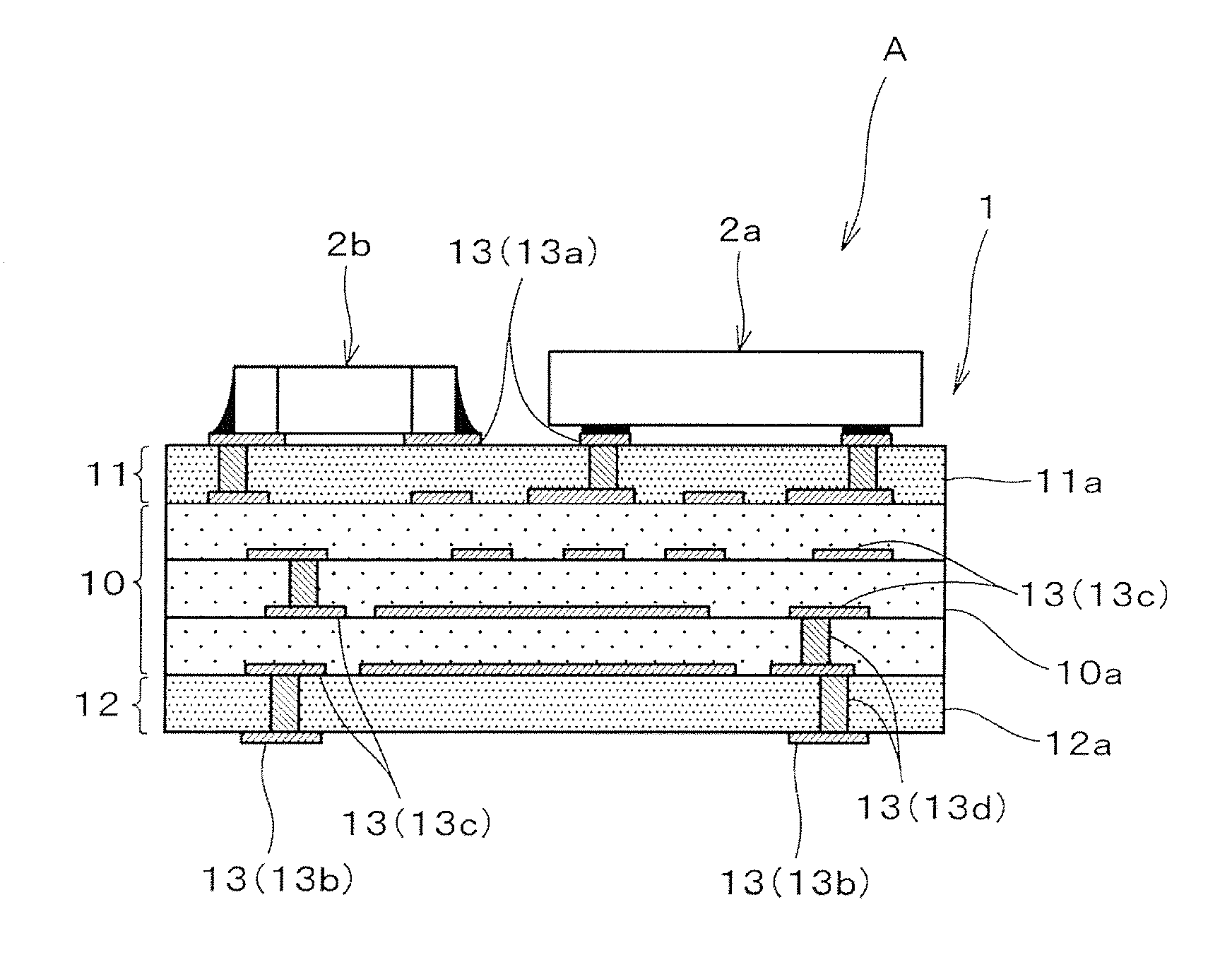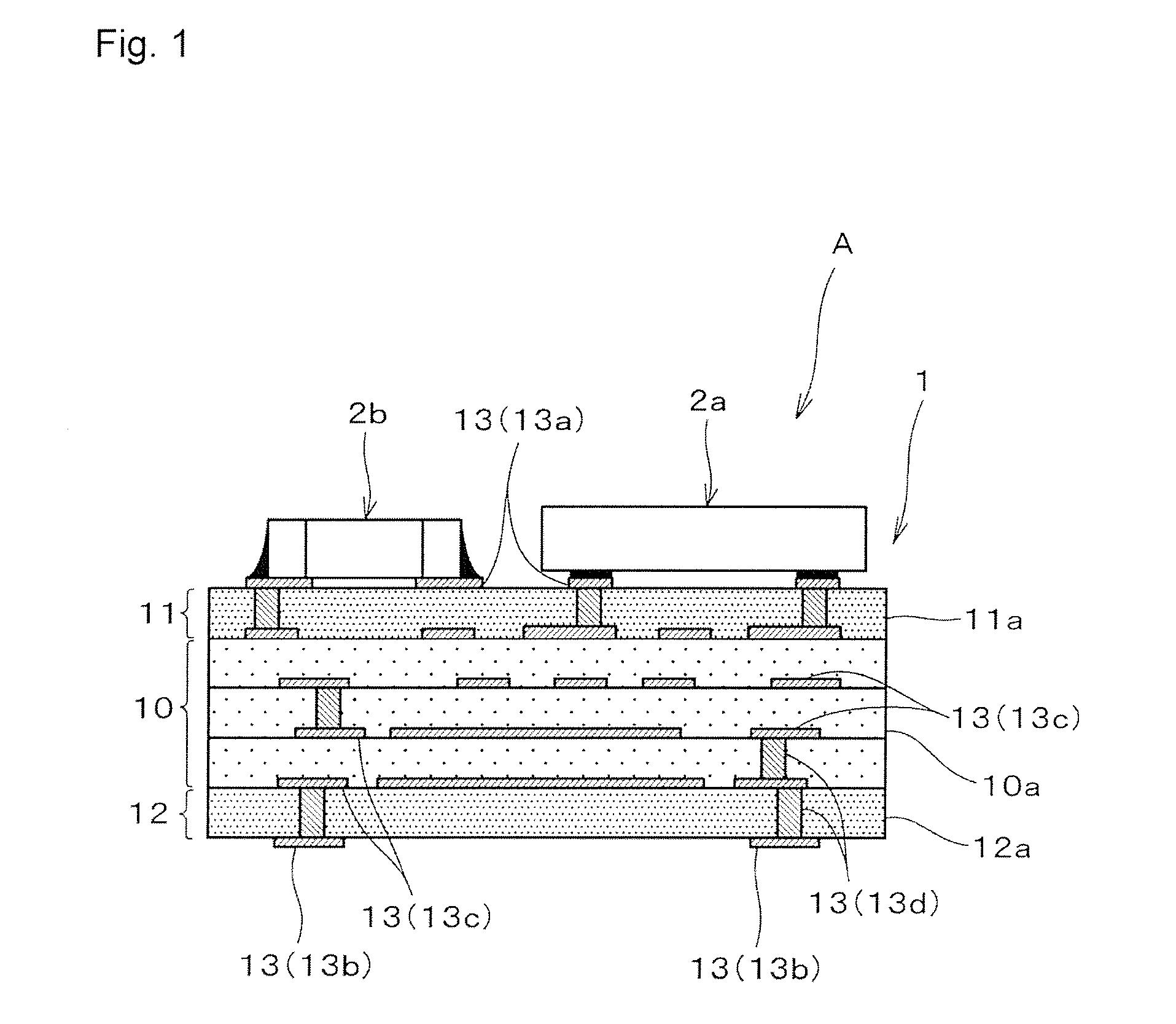Multilayer ceramic substrate and electronic component using same
- Summary
- Abstract
- Description
- Claims
- Application Information
AI Technical Summary
Benefits of technology
Problems solved by technology
Method used
Image
Examples
Embodiment Construction
[0050]Features of the present invention will be described in more detail with reference to embodiments of the present invention below.
[0051][Configuration of Multilayer Ceramic Substrate]
[0052]FIG. 1 is a front cross-sectional view illustrating an electronic component according to an embodiment of the present invention, where chip components are mounted on surface electrodes of a multilayer ceramic substrate according to an embodiment of the present invention.
[0053]The multilayer ceramic substrate 1 constituting the electronic component A has a stacked structure including an inner-layer section 10 and first and second surface-layer sections 11, 12 stacked and provided on both principal surfaces of the inner-layer section 10 so as to sandwich the inner-layer section 10 in a stacking direction.
[0054]It is to be noted that the inner-layer section 10 includes at least one inner-layer section ceramic layer 10a, whereas the first and second surface-layer sections 11, 12 also respectively ...
PUM
 Login to View More
Login to View More Abstract
Description
Claims
Application Information
 Login to View More
Login to View More - R&D
- Intellectual Property
- Life Sciences
- Materials
- Tech Scout
- Unparalleled Data Quality
- Higher Quality Content
- 60% Fewer Hallucinations
Browse by: Latest US Patents, China's latest patents, Technical Efficacy Thesaurus, Application Domain, Technology Topic, Popular Technical Reports.
© 2025 PatSnap. All rights reserved.Legal|Privacy policy|Modern Slavery Act Transparency Statement|Sitemap|About US| Contact US: help@patsnap.com



